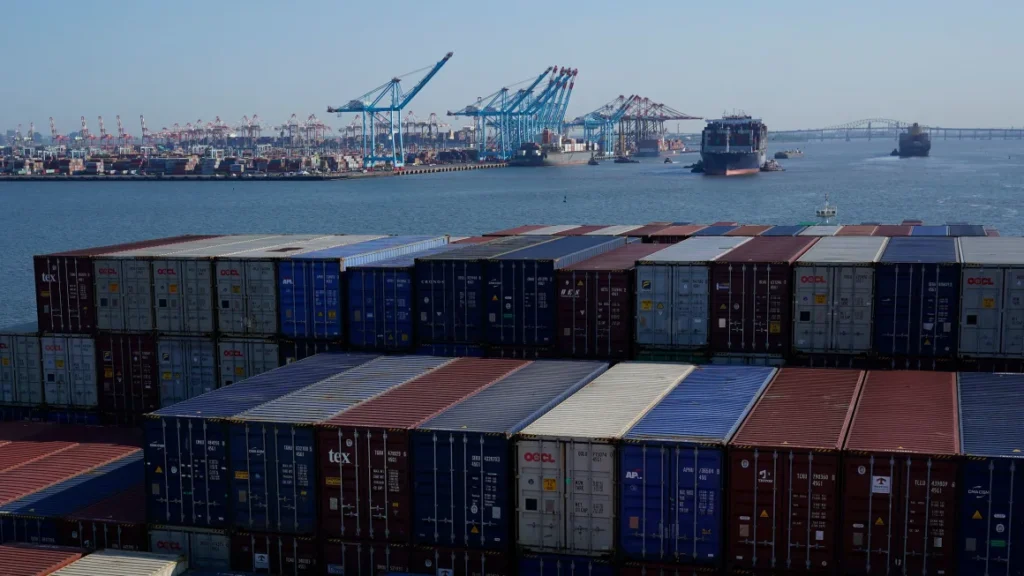A potentially devastating Longshore Workers Strike Impact on U.S. Supply Chains, from Maine to Texas, is set to begin Tuesday morning. The walkout may derail the flow of goods at almost all cargo ports along the East and Gulf coasts and could deal a blow to the U.S. economy unseen for decades. With the threat looming, both businessmen and consumers are bracing for shortages of essentials and increased prices
Why does Longshore Workers Strike matter?
The International Longshoremen’s Association, with a total of approximately 85,000 members, is gearing up to strike because talks with the United States Maritime Alliance failed to get off the ground.
The ILA members oversee the flow into and out of ports; if they walk off the job, everything from bananas and wine to clothes and cars could ground to a halt in their importation and exportation.
It’s not about our workers—it’s how goods get to every household in America,” said ILA International President and Chief Negotiator Harold Daggett. This strike threatens to carry all the ammunition for consumer goods delay, factory closure, and disruption the supply chain, making it perhaps one of the most effective strikes that U.S. ports have witnessed in recent times.
What is at Stake? Due to Longshore Workers Strike Impact.
Ports up and down the East and Gulf coasts, from the Port of New York and New Jersey to the Port of Baltimore, are a critical part of the U.S. economy. From the bananas shipped into Delaware’s Port Wilmington to the luxury cars exported out of South Carolina through the Port of Charleston, these facilities handle an enormous range of products Americans depend on every day.
However, if the strike does materialize, it would not only halt the transportation of those parts but also cut off the steady supply of those parts into U.S.Factories, in turn, had to take temporary lay-offs and shift that cost to the consumer.
“We would be in uncharted territory,” Patrick Anderson, president of the Michigan-based Anderson Economic Group, said. “A prolonged strike could be an economic blow,” he said.
Labor and Management Face-Off
The issues at the core of the controversy have to do with higher wages and working conditions. The ILA, as reported, is asking for an annual $5 increase that translates to a 77% increase in the six years of the contract. It is for this reason that the USMX has offered a 40% rise in the same period and is still referring to the union’s demands as “unreasonable.”.
“We are prepared to bargain at any time, but both parties have to be willing to sit down,” a USMX statement said. But yet, the biggest question is if both parties are on the same page and everything goes still, because, as indicated, the union will not move from its stand.
“My ILA members are not going to take these insulting proposals given our work and billions of dollars that these companies rake in off our backs,” ILA president Daggett declared
Economic Impact: An Emerging Supply Chain Crisis

Such a strike would probably shake every field upside down. U.S. factories would have to be shut down nationwide because there would be no spare parts and consumers would find everything-from fresh groceries, playing toys, and housewares-gone. Imported merchandise from Europe wine, beer, and might skyrocket through the roof, adding more momentum to what, finally, began to rise with the pandemic.
Ports such as the Port of Wilmington, which brings in more than one-fifth of all bananas imported in the country, and the Port of Baltimore, which handles more than a significant portion of auto imports, are very important to keeping supply chains intact.
Besides, 80 per cent of imported spirits, like whiskey, beer, and rum, go through these seized ports, so the port situation calls for an urgent resolution of the dispute.
The Bigger Picture: Profits vs Labor Rights
Shipping companies are at an all-time high in profits from and even for some time after the pandemic. Industry profits top $400 billion between 2020 and 2023. Such an enormous increase in profit would feed into the union’s demands for improved compensation.
The companies counter this with the fact that labour costs must remain sustainable since any other form would lead to a price increase and bottlenecks in the supply chain.
John Hewitt, senior vice president at the Consumer Brands Association, said, “The approach that the union is undertaking into account the intricacies of a global supply chain and may exacerbate the issue further.”
What is the Way Ahead?
While the ILA has agreed to handle military freight and passenger vessels, nearly all other cargo will be affected. Oil tankers and shipments of liquified natural gas may somehow dodge the disruption, but most every cargo shipment up and down the East and Gulf coasts could grind to a halt if the strike continues.
Consumers, as well as businesses, will be watching in anticipation of how this strike is going to play out. There may be a hopeful trend that the strike could reach a resolution fairly quickly, but if that does not occur, the economic damage would be enormous.
Time continues to pass and the aftermath may have a shockwave throughout the U.S. economy, the ripplings will be felt for months into the future by both businesses and households.
As the strike approaches, the nation’s supply chains hang in the balance, as a prolonged labour disruption may have never happened to the economy before, at least in this way; for now, however, it is the negotiating table as the parties await a resolution that will avoid a full-scale shutdown.
Read more for Best AI Chatbots in 2024







